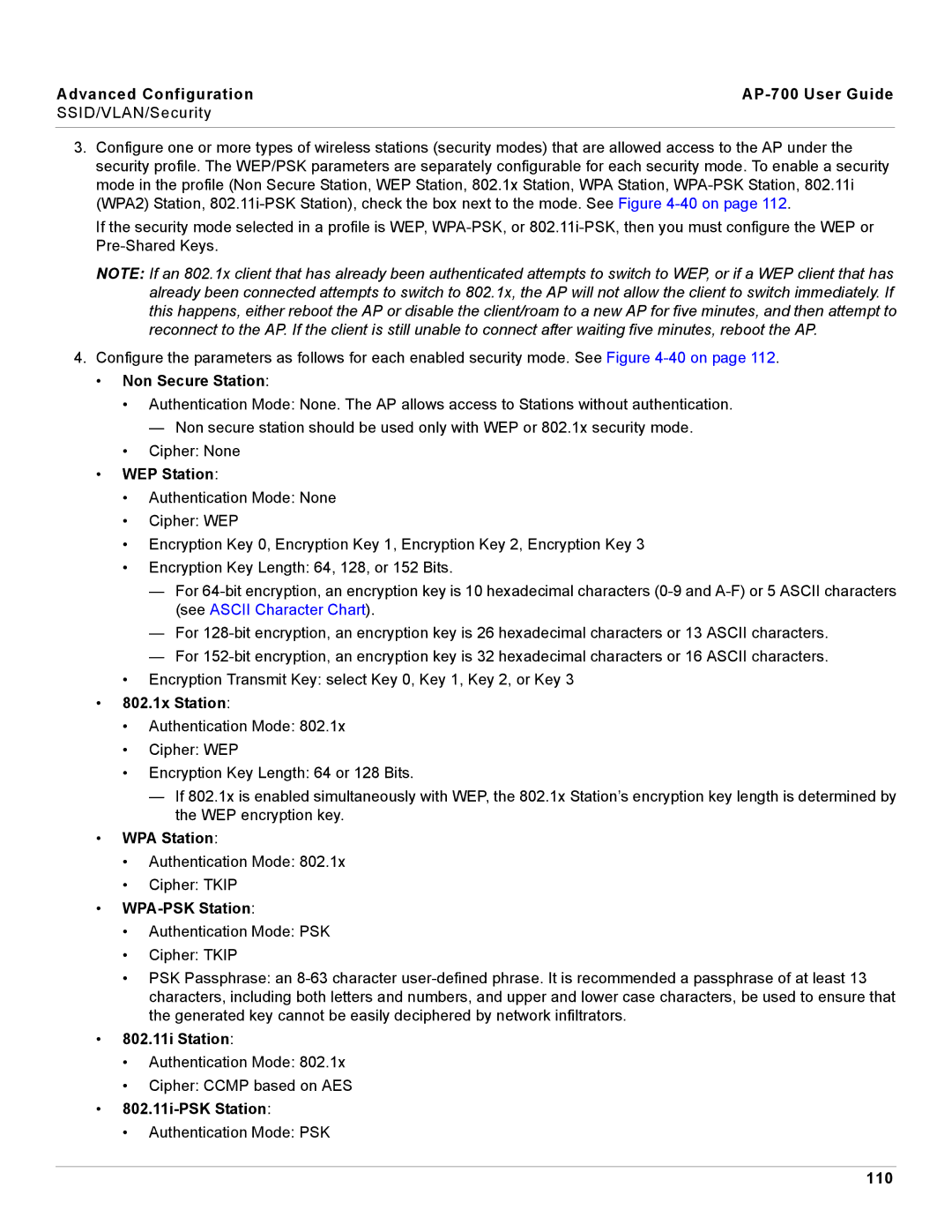Advanced Configuration |
|
SSID/VLAN/Security |
|
|
|
3.Configure one or more types of wireless stations (security modes) that are allowed access to the AP under the security profile. The WEP/PSK parameters are separately configurable for each security mode. To enable a security mode in the profile (Non Secure Station, WEP Station, 802.1x Station, WPA Station,
If the security mode selected in a profile is WEP,
NOTE: If an 802.1x client that has already been authenticated attempts to switch to WEP, or if a WEP client that has already been connected attempts to switch to 802.1x, the AP will not allow the client to switch immediately. If this happens, either reboot the AP or disable the client/roam to a new AP for five minutes, and then attempt to reconnect to the AP. If the client is still unable to connect after waiting five minutes, reboot the AP.
4.Configure the parameters as follows for each enabled security mode. See Figure
•Non Secure Station:
•Authentication Mode: None. The AP allows access to Stations without authentication.
—Non secure station should be used only with WEP or 802.1x security mode.
•Cipher: None
•WEP Station:
•Authentication Mode: None
•Cipher: WEP
•Encryption Key 0, Encryption Key 1, Encryption Key 2, Encryption Key 3
•Encryption Key Length: 64, 128, or 152 Bits.
—For
—For
—For
•Encryption Transmit Key: select Key 0, Key 1, Key 2, or Key 3
•802.1x Station:
•Authentication Mode: 802.1x
•Cipher: WEP
•Encryption Key Length: 64 or 128 Bits.
—If 802.1x is enabled simultaneously with WEP, the 802.1x Station’s encryption key length is determined by the WEP encryption key.
•WPA Station:
•Authentication Mode: 802.1x
•Cipher: TKIP
•WPA-PSK Station:
•Authentication Mode: PSK
•Cipher: TKIP
•PSK Passphrase: an
•802.11i Station:
•Authentication Mode: 802.1x
•Cipher: CCMP based on AES
•802.11i-PSK Station:
•Authentication Mode: PSK
